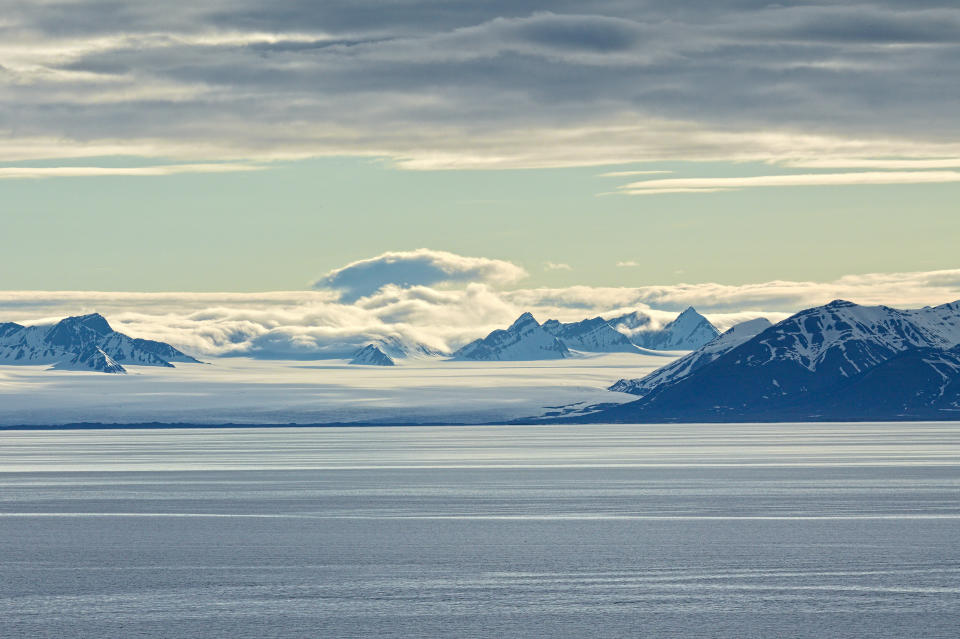How the fastest-warming place on Earth copes with rapid glacial melt

When Hedda Andersen was on her weekly walk on a trail she enjoys, she was shocked at what was there, or what wasn't there, actually.
The trail, which led up to a mountain, in Svalbard, Norway, had been cut off when she reached a certain point. That section of the trail had disappeared because it was on top of an ice moraine, glacial debris atop of the previous snout of a glacier that had retreated.
DON'T MISS: Most of Western Canada's glaciers will melt in 80 years, UNBC study finds
Svalbard is a Norwegian archipelago in the Arctic Ocean, situated north of mainland Europe. It is considered to be the fastest-warming place on Earth.
Andersen spends much of her free time documenting the retreat of the glaciers, from the sky.
"Once these start melting out, these whole terrains, they just collapse completely," Andersen, a local glaciologist, told Jaclyn Whittal, a meteorologist at The Weather Network, when she was in Norway on a recent expedition to the northern European country.

(Getty Images-1327251915/Rixipix)
'Climate change is very real here'
Andersen is co-founder of a collaboration known as The Living Ice Project,, an initiative consisting of four scientists and environmental communicators dedicated to glacier research. Its website allows people to watch a 360-degree view of multiple glaciers in Svalbard, and see how they are changing.
"I work a lot with imagery. I am a drone pilot. I have much of my degrees based on what is called remote sensing," said Andersen.
A drone affords Andersen and others like her the opportunity to conduct scientific research by using imagery, which is "very visual," she said.
"Climate change is very real here. It's happening very fast. It's turning into a more wet and warm climate, moving away from a polar desert climate," said Andersen. "We're going to see more snow, more rain...[and] higher temperatures."

(Getty Images-157604196/Photomick)
The warming Andersen is referencing is directly tied to ocean heat. The warmer our air temperatures on Earth are, the warmer our oceans get. To put that into context, we are basically sending a conveyor belt of heat directly toward the part of the Arctic where Svalbard is located.
"We've had days where we've gone from -43°C in one day to four-plus [°C] the next day. It's pouring rain and all the snow just goes [away]," said Andersen.
Ice-free off the coast of Norway by 2050
The Barents Sea, of the coasts of Norway and Russia, is expected to be completely ice-free by 2050. To make matters worse, the water is moving up over the continental shelf into the fjords.
The waters of the North Atlantic Current (NAC), basically, is responsible for warming Svalbard at four times the rate when compared to other Arctic locations. The warming of the Earth –– due to increasing, excess greenhouse gasses –– is being absorbed by our oceans, with Svalbard caught in the middle of it as a result.

(Getty Images-1776622592/Krzysztof Flasza)
Despite the doom and gloom, Andersen always has a hopeful response when asked about the future of the planet, and if we can reverse the current trend with climate change.
"Regardless of what's going on with all the glaciers, all of the retreats and collapses that we're seeing, my answer will always be yes," said Andersen. "I couldn't do this job if I didn't believe that."
Setting out to document climate change
As part of her Norway expedition, Whittal also joined female citizen scientists, Sunniva Sorby and Hilde Falun Strom. The two women spent more than 19 months in solitary in a cabin on Svalbard, documenting and collecting scientific data on behalf of NASA, Polar Bears International and other organizations.
They set out to view the calving glaciers for themselves, and to learn and discuss solutions for climate change.
Jaclyn Whittal was elected a fellow of the international Explorers Club in 2023. She is also continuing her studies, having completed her master’s degree with a focus on climate action and leadership
Stay tuned for additional coverage on Jaclyn Whittal's trip to Norway, coming soon to The Weather Network.
WATCH: Can polar bears fight off climate change by eating reindeer?
Drone footage in the video preceding the article is courtesy of Hedda Andersen.
With files from Jaclyn Whittal, a meteorologist at The Weather Network.
Thumbnail courtesy of Getty Images-1444326267/Thomas Richards.
Follow Nathan Howes on the X platform, formerly known as Twitter.

